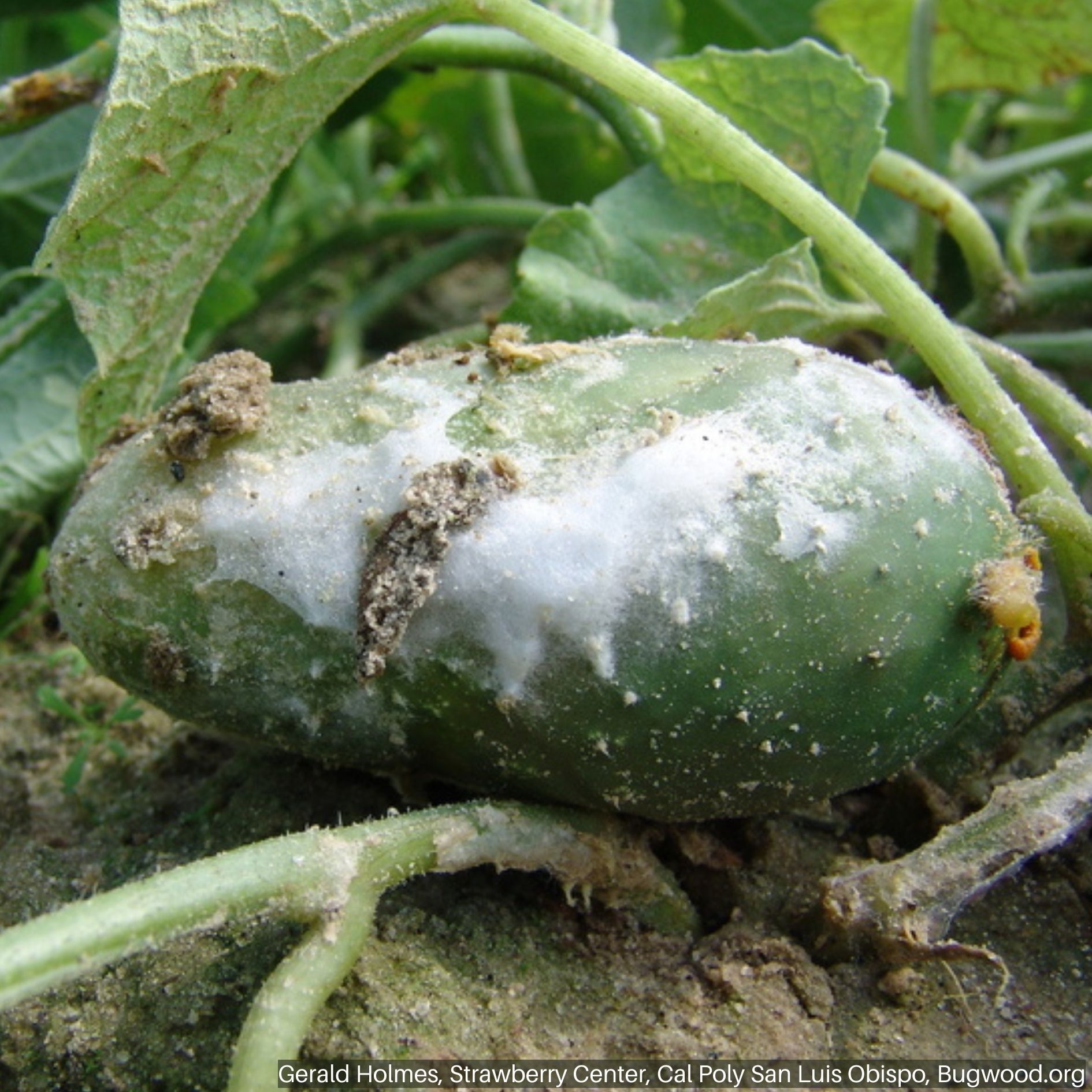Pythium Fruit Rot
HOSTS
- Cucurbits
- Solanaceae
DESCRIPTION
Pythium fruit rot can be caused by multiple Pythium species. In Utah, both Pythium aphanidermatum and Pythium ultimum have been observed.
BIOLOGY
Pythium spp. survive in the soil without hosts. When moisture becomes available, Pythium will produce spores, some of which are capable of independent movement. The spores can invade hosts through pre-existing wounds or through direct penetration.
SYMPTOMS
- Stunted growth
- Discolored and wilted foliage and stems.
- Fruit with water-soaked brown spots where the fruit touches the ground.
- White mycelium growth on fruit lesions.
- Rotted fruit, with collapsed walls.
GENERAL MANAGEMENT
- Use certified disease-free seeds and transplants.
- Minimize moisture by utilizing drip irrigation ensuring soils are well-draining.
- Avoid overwatering, as wet soils increase the spread of disease.
- Use plastic mulch and staking to keep fruit from being in contact with the soil.
FUNGICIDES
- Mefenoxam products used in soil drenches can reduce root rot. These are ineffective
Precautionary Statement: Utah State University and its employees are not responsible for the use, misuse, or damage caused by application or misapplication of products or information mentioned in this document. All pesticides are labeled with ingredients, instructions, and risks, and not all are registered for edible crops. “Restricted use” pesticides may only be applied by a licensed applicator. The pesticide applicator is legally responsible for proper use. USU makes no endorsement of the products listed in this publication.





